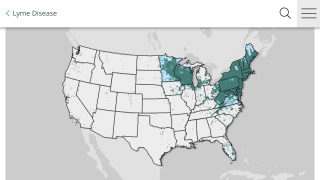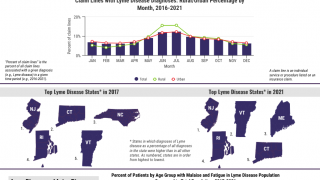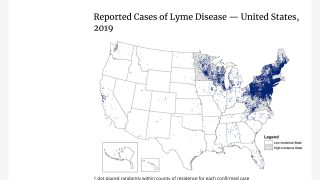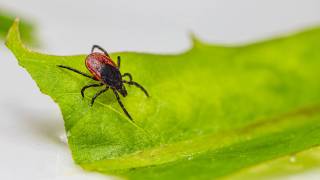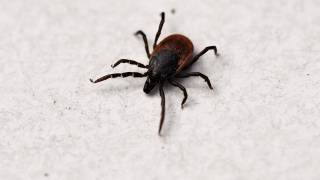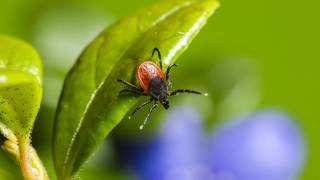Lyme Disease-Carrying Ticks Have Returned

The tick responsible for most Lyme diseases cases has boomed from near non-existence in the 1960s to become the most commonly found tick across the state of Pennsylvania, according to new research.
“Right now, the dominant tick species is Ixodes scapularis, or black-legged tick (deer tick), which is the primary vector of Lyme disease,” said Joyce Sakamoto, an assistant research professor of entomology in the Penn State College of Agricultural Sciences, in a press release.
These Penn State researchers believe the black-legged tick population might have increased in recent years because the timber that was cut down around 1900 has grown back, which is providing ticks with an expanded habitat.
As reforestation spread across Pennsylvania, the population of black-legged ticks exploded. Black-legged ticks are now found in every county in Pennsylvania.
Ticks that spread germs to people can have up to 2- to 3-year lifecycles, and many factors can affect their numbers. In any given year, the number of ticks in an area will be different from region to region, state to state, and even county to county.
According to these researchers, 5 tick species make up more than 90 percent of submissions:
- Amblyomma americanum, lone star tick
- Dermacentor variabilis, American dog tick
- Ixodes cookie, groundhog tick or woodchuck tick
- Ixodes scapularis, black-legged tick
- Rhipicephalus sanguineus, brown dog tick
The Centers for Disease Control and Prevention (CDC) notes a 3.5-fold increase in vector-borne diseases in the U.S. from 2004-2016, with more than 76 percent of cases caused by tick-borne pathogens.
One example is the lone star tick, which transmits the pathogens that cause ehrlichiosis, tularemia, and Heartland virus disease.
Over the past 20 years, new tickborne germs that can cause illness have been identified in the USA, such as Borrelia mayonii, Borrelia miyamotoi, Ehrlichia ewingii, Ehrlichia muris eauclairensis, Heartland virus, Rickettsia parkeri, and Rickettsiaspecies 364D, says the CDC.
In 2017, various health departments reported a record number of cases of tick-borne diseases, from a total of 48,610 reported cases in 2016, increasing to a total of 59,349 reported cases in 2017.
Most of those cases are Lyme disease.
A CDC study published during November 2018 revealed that Lyme disease had spread to all 50 United States and the District of Columbia during 2017.
Unfortunately, Pennsylvania has reported the highest number of Lyme disease cases in the USA since 2000.
And, Lyme disease has become a worldwide concern.
The World Health Organisation reported Lyme disease cases are increasing at a rate of 14 percent a year, led by the Czech Republic, Estonia, Lithuania, and Slovenia.
Moreover, without a preventive vaccine available, these researchers are projecting more Lyme Disease cases to be reported in 2019.
Recently, Valneva reported final Phase 1 and positive initial booster data regarding the VLA15 vaccine candidate, which showed a favorable safety profile and was immunogenic in all doses and formulations tested with good OspA-specific IgG antibody responses against all OspA serotypes.
VLA15 is a multivalent, protein subunit vaccine that targets the outer surface protein A (OspA) of Borrelia.
Until a vaccine becomes available, the CDC says protection is the best defense from contracting Lyme Disease.
This CDC warning means to wear protective clothing and use DEET spray prior to your next walk in the woods!
Our Trust Standards: Medical Advisory Committee



